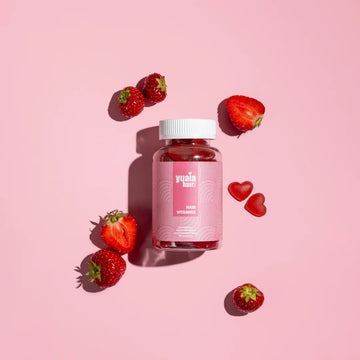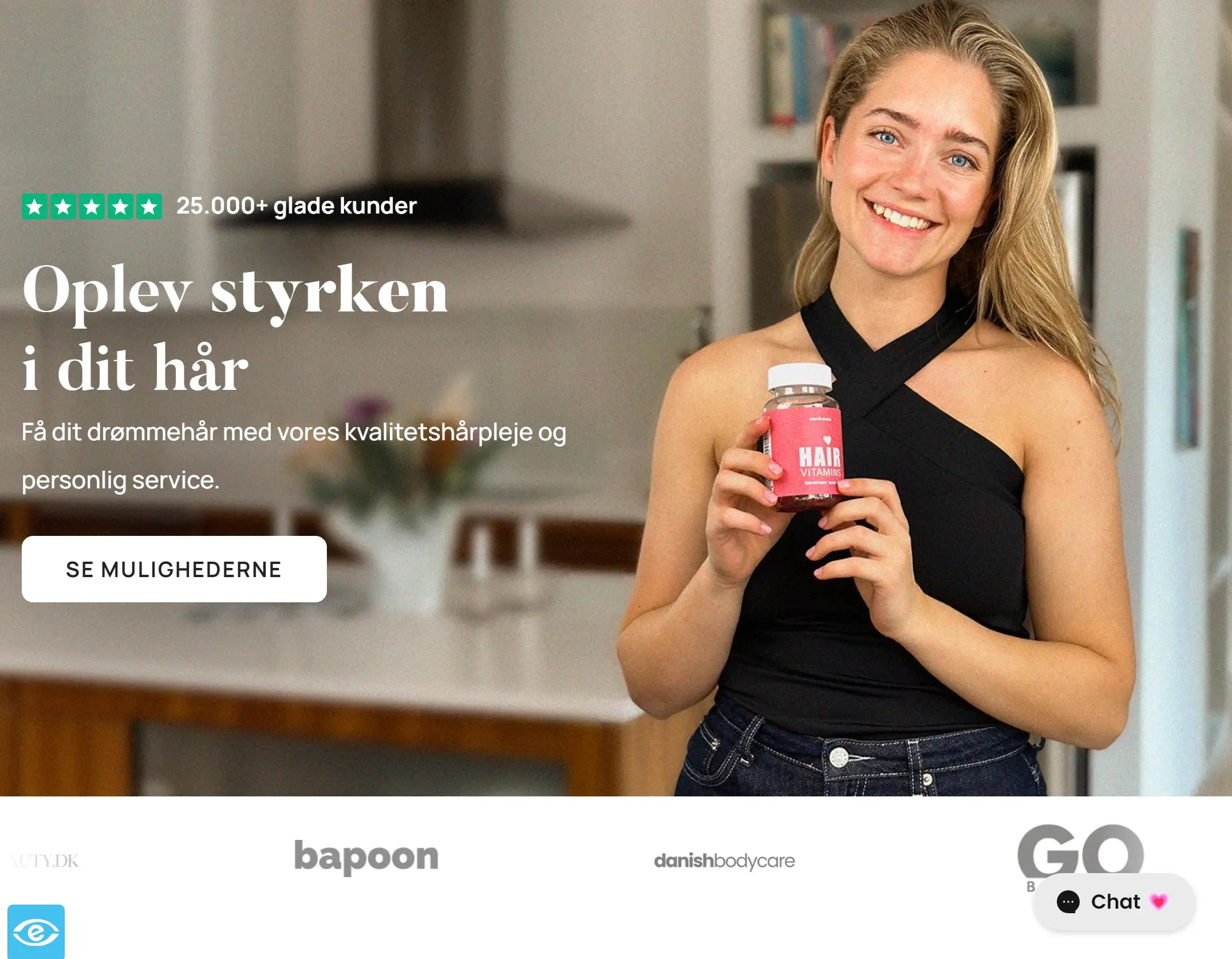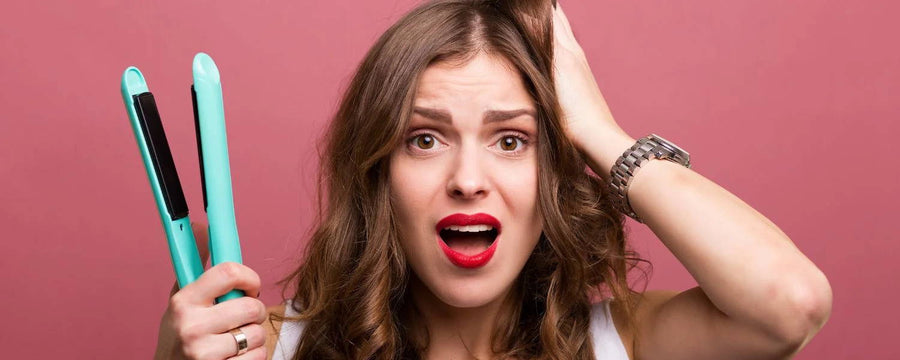Other tips to protect your hair from heat
In addition to using heat protectant, there are other steps you can take to protect your hair from heat:
-
Wash your hair with a mild shampoo and conditioner formulated to protect and strengthen hair.
-
Use a moisturizing hair mask once a week to add extra moisture to your hair.
-
Avoid using hot styling tools on wet hair as this can lead to further damage.
-
Let your hair dry naturally as often as possible and avoid using hot styling tools on a daily basis
The science behind heat protectant for hair
Heat protectant is essential to prevent damage to hair caused by hot styling tools such as flat irons, curling irons and blow dryers. These tools can reach temperatures up to 200-230°C, which can cause significant damage to the hair strands, including loss of moisture, weakening of the proteins in the hair and hair breakage. The science behind heat protectant focuses on minimising this damage by creating a barrier between the hair and the heat.
Scientific evidence
Research has shown that regular use of heat protectants can reduce the amount of damage that occurs when using hot styling tools. A study published in the Journal of Cosmetic Science demonstrated that products with silicone-based ingredients effectively reduced hair damage at high temperatures. In addition, several studies have shown that heat protectants containing hydrolysed keratin can improve hair strength and elasticity.
What are The Benefits of Heat protectant Sprays
Heat protectant sprays contain ingredients that coat each hair strand. It creates a barrier against heat damage. Heat protectant sprays offer a range of benefits for your hair, especially when using hot styling tools. Here are the primary advantages:
-
Reduced Split Ends: Heat dries hair, leading to split ends. Heat protectant sprays lock in moisture, preventing these pesky split ends.
-
Shinier Hair: Heat can make hair dull. Heat protectant sprays contain ingredients that add shine to hair.
-
Less Frizz: Heat can cause frizz. Protective film from the spray helps smooth the hair cuticle, resulting in smoother, frizz-free strands.
-
Easier Styling: Heat protectant sprays can make hair more manageable. This allows for easier styling and long-lasting results.
-
Stronger Hair: Heat weakens hair, making it prone to breakage. Heat protectant sprays shield hair. It reduces breakage.
-
Vibrant Color (For Colored Hair): Heat can fade hair color. Some heat protectant sprays are formulated for color-treated hair.
By using a heat protectant spray regularly, you can maintain healthy, beautiful hair that's easier to style and manage.
How To Use Heat protectant Spray For Straightening Hair
Here's how to use heat protectant spray specifically for straightening hair:
- Wash and condition your hair. Clean hair absorbs products better.
- Towel-dry your hair. Don't apply the spray to soaking wet hair, aim for dampness.
- Shake the heat protectant bottle well. This ensures that all the active ingredients are evenly mixed for maximum effectiveness.
- Section your hair. Smaller sections help you coat every strand, preventing missed areas that could be exposed to high heat.
- Spray the heat protectant from mid-shaft to ends generously. Straightening irons focus on these areas the most.
- Comb through your hair to distribute the product evenly.
- Let your hair dry partially. Aim for about 80% dry before using the straightener.
- Use a lower heat setting on your straightener if possible. This minimizes heat damage.
- Straighten small sections of hair at a time. Multiple passes are better than overheating one section.
For best results, pair your straightening routine with a silicone free heat protectant spray. These sprays provide lightweight yet effective protection, keeping your hair sleek and manageable.
Different Types of Heat Protectants
Heat protectants come in various forms, each with its own benefits:
-
Sprays: These are popular and easy to use. They work well for most hair types.
-
Creams and serums: These are good for thick or coarse hair that needs extra moisture.
-
Leave-in conditioners: These offer heat protection along with detangling and frizz-fighting benefits.
The best type of heat protectant for you depends on your hair type and styling needs.
What Is The Best Heat protectant spray?
Unfortunately, there's no single "best" heat protectant spray for everyone. The best choice depends on your specific hair type and needs. Here's how to find the perfect match for your hair. Look for these key ingredients in your heat protectant spray:
-
Silicones: These are the workhorses of heat protectant, forming a protective film.
-
Natural oils: Some sprays contain oils like argan oil or coconut oil, which add moisture and shine.
-
Amino acids: These help strengthen hair and improve its elasticity.
When choosing a heat protectant, avoid products with high alcohol content, as it can be drying. For those looking to avoid heavy buildup, silicone free heat protectant sprays can provide excellent results while maintaining a lightweight feel.
Also, consider the following before buying your heat protectant spray.
-
Hair Type: Fine hair might benefit from a lightweight spray, while thick hair might need a creamier formula for extra moisture.
-
Heat Styling Habits: If you use very hot tools frequently, look for a spray with high heat protection (over 400°F).
-
Desired Benefits: Do you want added shine? Frizz control? Color protection? Choose a spray formulated for your specific needs.
Here are some resources to help you find the best heat protectant spray:
-
Reviews: Read online reviews from people with similar hair types to yours.
-
Salons: Consult your hairstylist for recommendations based on your hair's condition.
-
Drugstore vs. Salon Brands: Both offer effective options. Experiment to find one that works for you within your budget.
Remember, the most important thing is to use a heat protectant spray every time you use heat styling tools.
Frequently asked questions about heat protectant
Are straighteners harmful to hair?
You must always be aware not to use heat styling too often. But in small amounts it can be fine. However, it is important to ensure that heat protectant is always used when using them. Heat protectants helps protect the hair from being damaged and brittle due to the high temperatures of the straightener. These injuries can include split ends, breakage and dullness. When using a straightener, it's also important to keep in mind the type of hair you have so you don't overdo it with the heat; finer or damaged hair may require a lower temperature setting than thicker or healthier hair. In order for your hair to stay healthy and beautiful, it's best to use your straightener sparingly and always follow up with a moisturizing product to help counteract dryness caused by the heat.

How many degrees should I set my heat styling to?
When you use a heat styling tool such as a straightener to style your hair, the optimal temperature is between 150 and 230 degrees Celsius (302-446 degrees Fahrenheit). However, depending on the thickness and health of your hair, this interval may need to be adjusted. Finer or damaged hair may require temperatures closer to the lower end of the range (150-180 °C/302-356 °F), while thicker or healthier hair may require higher temperatures up to 230 °C/446 °F.
However, the optimal heat for your straightener or curling iron for most people is around 175 to 190 degrees. It is important to ensure that you do not set the temperature too high as this can damage your hair.
Is hair oil a heat protectant?
Yes, hair oil can be a heat protectant, depending on its composition. Some hair oils contain ingredients that form a protective barrier around the hair, helping to prevent damage caused by heat styling tools such as hairdryers, flat irons and curling irons.
Oils like argan oil, coconut oil and jojoba oil have natural properties that can help protect hair from heat. These oils can reduce heat damage by creating a protective film around the hair shaft, minimising moisture loss and protecting the hair structure.
However, it's important to follow the product's instructions, as some hair oils may not work as a heat protectant and you can cause a lot of damage to your hair if you use heat styling without a proper protectant.
Can you use heat protectant on wet hair?
Yes, you can use heat protectant on wet hair. After washing and towel-drying your hair, spray the heat protectant product evenly throughout your hair, from roots to ends. Use a wide-toothed comb to distribute the heat protectant and then dry your hair as usual with your hot styling tools. This helps protect the hair from heat damage and keeps it healthy and strong.
Product recommendations for heat protection
Heat protectant is so important for your hair that it's important to find one with plenty of protection. We've seen many horror stories of heat-damaged hair over the years, which we'll try to help with our product recommendations.
Heat protectant spray with UV protection
We've developed a powerful heat protectant spray that protects up to 220 degrees, so your hair is protected when using straightening or curling irons. It also contains UV protection, which is especially important in the summer when hair is exposed to a lot of UV rays that can dry out and damage the hair. It also contains Aloe Vera, Sodium Hyaluronate and Glycerin, which help to moisturise and condition the hair. It helps tame frizzy hair and protects colour. What also makes it special is that it's silicone-free.
Nourishing hair serum with heat protection
If you often experience dry or frizzy hair, we can definitely recommend our Repair & Care hair serum. It's packed with moisturising ingredients such as Inca Inchi Oil and Hydrolysed Wheat Protein, which help to hydrate, condition and strengthen the hair. In fact, the ingredient Gluadin® WLM Benz helps reduce damaged hair by up to 80%. The hair serum is heat protective and can therefore also be used for heat styling. It should be applied to wet hair and is therefore ideal for those who blow-dry their hair a lot.
 2-5 day delivery
2-5 day delivery
 25.000+ satisfied customers
25.000+ satisfied customers
 Satisfaction Guarantee
Satisfaction Guarantee















